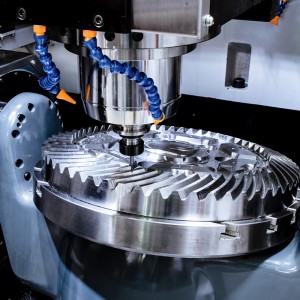Brief Introduction of Steel Materials
Information of Steel
| Features | Info |
| Subtypes | 4140, 4130, A514, 4340 |
| Process | CNC machining, injection molding, sheet metal fabrication |
| Tolerance | With drawing: as low as +/- 0.005 mm No drawing: ISO 2768 medium |
| Applications | Fixtures and mounting plates; draft shafts, axles, torsion bars |
| Finishing Options | Black Oxide, ENP, Electropolishing, Media Blasting, Nickel Plating, Powder Coating, Tumble Polishing, Zinc Plating |
Available Steel Subtypes
| Subtypes | Yield Strength | Elongation at Break |
Hardness | Density |
| 1018 Low Carbon Steel | 60,000 psi | 15% | Rockwell B90 | 7.87 g/㎤ 0.284 lbs / cu. in. |
| 4140 Steel | 60,000 psi | 21% | Rockwell C15 | 7.87 g/㎤ 0.284 lbs / cu. in. |
| 1045 Carbon Steel | 77,000 psi | 19% | Rockwell B90 | 7.87 g/㎤ 0.284 lbs / cu. in. |
| 4130 Steel | 122,000 psi | 13% | Rockwell C20 | 7.87 g/㎤ 0.284 lbs / cu. in. |
| A514 Steel | 100,000 psi | 18% | Rockwell C20 | 7.87 g/㎤ 0.284 lbs / cu. in. |
| 4340 Steel | 122,000 psi | 13% | Rockwell C20 | 7.87 g/㎤ 0.284 lbs / cu. in. |
General Information for Steel
Steel, alloy of iron and carbon in which the carbon content ranges up to 2 percent (with a higher carbon content, the material is defined as cast iron). By far the most widely used material for building the world’s infrastructure and industries, it is used to fabricate everything from sewing needles to oil tankers. In addition, the tools required to build and manufacture such articles are also made of steel. As an indication of the relative importance of this material, iThe main reasons for the popularity of steel are the relatively low cost of making, forming, and processing it, the abundance of its two raw materials (iron ore and scrap), and its unparalleled range of mechanical properties.








